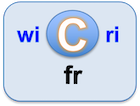Increased ambient noise and elevated vocal effort contribute to airborne transmission of COVID-19.
Identifieur interne : 000137 ( Main/Exploration ); précédent : 000136; suivant : 000138Increased ambient noise and elevated vocal effort contribute to airborne transmission of COVID-19.
Auteurs : Jonathan A. Kopechek [États-Unis]Source :
- The Journal of the Acoustical Society of America [ 1520-8524 ] ; 2020.
Abstract
Widespread transmission of a novel coronavirus, COVID-19, has caused major public health and economic problems around the world. Significant mitigation efforts have been implemented to reduce the spread of COVID-19 but the role of ambient noise and elevated vocal effort on airborne transmission have not been widely reported. Elevated vocal effort has been shown to increase emission of potentially infectious respiratory droplets, which can remain airborne for up to several hours. Multiple confirmed clusters of COVID-19 transmission were associated with settings where elevated vocal effort is generally required for communication, often due to high ambient noise levels, including crowded bars and restaurants, meat packing facilities, and long-stay nursing homes. Clusters of COVID-19 transmission have been frequently reported in each of these settings. Therefore, analysis of COVID-19 transmission clusters in different settings should consider whether higher ambient noise levels, which are associated with increased vocal effort, may be a contributing factor in those settings. Mitigation strategies that include reduction of ambient noise, softer speech practices, and the use of technology such as microphones and speakers to decrease vocal effort will likely reduce the risk of transmitting COVID-19 or other airborne pathogens.
DOI: 10.1121/10.0002640
PubMed: 33261418
Affiliations:
Links toward previous steps (curation, corpus...)
Le document en format XML
<record><TEI><teiHeader><fileDesc><titleStmt><title xml:lang="en">Increased ambient noise and elevated vocal effort contribute to airborne transmission of COVID-19.</title><author><name sortKey="Kopechek, Jonathan A" sort="Kopechek, Jonathan A" uniqKey="Kopechek J" first="Jonathan A" last="Kopechek">Jonathan A. Kopechek</name><affiliation wicri:level="1"><nlm:affiliation>Department of Bioengineering, University of Louisville, Louisville, Kentucky 40292, USA.</nlm:affiliation><country xml:lang="fr">États-Unis</country><wicri:regionArea>Department of Bioengineering, University of Louisville, Louisville, Kentucky 40292</wicri:regionArea><wicri:noRegion>Kentucky 40292</wicri:noRegion></affiliation></author></titleStmt><publicationStmt><idno type="wicri:source">PubMed</idno><date when="2020">2020</date><idno type="RBID">pubmed:33261418</idno><idno type="pmid">33261418</idno><idno type="doi">10.1121/10.0002640</idno><idno type="wicri:Area/Main/Corpus">000014</idno><idno type="wicri:explorRef" wicri:stream="Main" wicri:step="Corpus" wicri:corpus="PubMed">000014</idno><idno type="wicri:Area/Main/Curation">000014</idno><idno type="wicri:explorRef" wicri:stream="Main" wicri:step="Curation">000014</idno><idno type="wicri:Area/Main/Exploration">000014</idno></publicationStmt><sourceDesc><biblStruct><analytic><title xml:lang="en">Increased ambient noise and elevated vocal effort contribute to airborne transmission of COVID-19.</title><author><name sortKey="Kopechek, Jonathan A" sort="Kopechek, Jonathan A" uniqKey="Kopechek J" first="Jonathan A" last="Kopechek">Jonathan A. Kopechek</name><affiliation wicri:level="1"><nlm:affiliation>Department of Bioengineering, University of Louisville, Louisville, Kentucky 40292, USA.</nlm:affiliation><country xml:lang="fr">États-Unis</country><wicri:regionArea>Department of Bioengineering, University of Louisville, Louisville, Kentucky 40292</wicri:regionArea><wicri:noRegion>Kentucky 40292</wicri:noRegion></affiliation></author></analytic><series><title level="j">The Journal of the Acoustical Society of America</title><idno type="eISSN">1520-8524</idno><imprint><date when="2020" type="published">2020</date></imprint></series></biblStruct></sourceDesc></fileDesc><profileDesc><textClass></textClass></profileDesc></teiHeader><front><div type="abstract" xml:lang="en">Widespread transmission of a novel coronavirus, COVID-19, has caused major public health and economic problems around the world. Significant mitigation efforts have been implemented to reduce the spread of COVID-19 but the role of ambient noise and elevated vocal effort on airborne transmission have not been widely reported. Elevated vocal effort has been shown to increase emission of potentially infectious respiratory droplets, which can remain airborne for up to several hours. Multiple confirmed clusters of COVID-19 transmission were associated with settings where elevated vocal effort is generally required for communication, often due to high ambient noise levels, including crowded bars and restaurants, meat packing facilities, and long-stay nursing homes. Clusters of COVID-19 transmission have been frequently reported in each of these settings. Therefore, analysis of COVID-19 transmission clusters in different settings should consider whether higher ambient noise levels, which are associated with increased vocal effort, may be a contributing factor in those settings. Mitigation strategies that include reduction of ambient noise, softer speech practices, and the use of technology such as microphones and speakers to decrease vocal effort will likely reduce the risk of transmitting COVID-19 or other airborne pathogens.</div></front></TEI><pubmed><MedlineCitation Status="In-Process" Owner="NLM"><PMID Version="1">33261418</PMID><DateRevised><Year>2020</Year><Month>12</Month><Day>10</Day></DateRevised><Article PubModel="Print"><Journal><ISSN IssnType="Electronic">1520-8524</ISSN><JournalIssue CitedMedium="Internet"><Volume>148</Volume><Issue>5</Issue><PubDate><Year>2020</Year><Month>11</Month></PubDate></JournalIssue><Title>The Journal of the Acoustical Society of America</Title><ISOAbbreviation>J Acoust Soc Am</ISOAbbreviation></Journal><ArticleTitle>Increased ambient noise and elevated vocal effort contribute to airborne transmission of COVID-19.</ArticleTitle><Pagination><MedlinePgn>3255</MedlinePgn></Pagination><ELocationID EIdType="doi" ValidYN="Y">10.1121/10.0002640</ELocationID><Abstract><AbstractText>Widespread transmission of a novel coronavirus, COVID-19, has caused major public health and economic problems around the world. Significant mitigation efforts have been implemented to reduce the spread of COVID-19 but the role of ambient noise and elevated vocal effort on airborne transmission have not been widely reported. Elevated vocal effort has been shown to increase emission of potentially infectious respiratory droplets, which can remain airborne for up to several hours. Multiple confirmed clusters of COVID-19 transmission were associated with settings where elevated vocal effort is generally required for communication, often due to high ambient noise levels, including crowded bars and restaurants, meat packing facilities, and long-stay nursing homes. Clusters of COVID-19 transmission have been frequently reported in each of these settings. Therefore, analysis of COVID-19 transmission clusters in different settings should consider whether higher ambient noise levels, which are associated with increased vocal effort, may be a contributing factor in those settings. Mitigation strategies that include reduction of ambient noise, softer speech practices, and the use of technology such as microphones and speakers to decrease vocal effort will likely reduce the risk of transmitting COVID-19 or other airborne pathogens.</AbstractText></Abstract><AuthorList CompleteYN="Y"><Author ValidYN="Y"><LastName>Kopechek</LastName><ForeName>Jonathan A</ForeName><Initials>JA</Initials><AffiliationInfo><Affiliation>Department of Bioengineering, University of Louisville, Louisville, Kentucky 40292, USA.</Affiliation></AffiliationInfo></Author></AuthorList><Language>eng</Language><PublicationTypeList><PublicationType UI="D016428">Journal Article</PublicationType></PublicationTypeList></Article><MedlineJournalInfo><Country>United States</Country><MedlineTA>J Acoust Soc Am</MedlineTA><NlmUniqueID>7503051</NlmUniqueID><ISSNLinking>0001-4966</ISSNLinking></MedlineJournalInfo><CitationSubset>IM</CitationSubset></MedlineCitation><PubmedData><History><PubMedPubDate PubStatus="entrez"><Year>2020</Year><Month>12</Month><Day>2</Day><Hour>5</Hour><Minute>20</Minute></PubMedPubDate><PubMedPubDate PubStatus="pubmed"><Year>2020</Year><Month>12</Month><Day>3</Day><Hour>6</Hour><Minute>0</Minute></PubMedPubDate><PubMedPubDate PubStatus="medline"><Year>2020</Year><Month>12</Month><Day>3</Day><Hour>6</Hour><Minute>0</Minute></PubMedPubDate></History><PublicationStatus>ppublish</PublicationStatus><ArticleIdList><ArticleId IdType="pubmed">33261418</ArticleId><ArticleId IdType="doi">10.1121/10.0002640</ArticleId></ArticleIdList></PubmedData></pubmed><affiliations><list><country><li>États-Unis</li></country></list><tree><country name="États-Unis"><noRegion><name sortKey="Kopechek, Jonathan A" sort="Kopechek, Jonathan A" uniqKey="Kopechek J" first="Jonathan A" last="Kopechek">Jonathan A. Kopechek</name></noRegion></country></tree></affiliations></record>Pour manipuler ce document sous Unix (Dilib)
EXPLOR_STEP=$WICRI_ROOT/Wicri/Wicri/explor/CovidPublicV1/Data/Main/Exploration
HfdSelect -h $EXPLOR_STEP/biblio.hfd -nk 000137 | SxmlIndent | more
Ou
HfdSelect -h $EXPLOR_AREA/Data/Main/Exploration/biblio.hfd -nk 000137 | SxmlIndent | more
Pour mettre un lien sur cette page dans le réseau Wicri
{{Explor lien
|wiki= Wicri/Wicri
|area= CovidPublicV1
|flux= Main
|étape= Exploration
|type= RBID
|clé= pubmed:33261418
|texte= Increased ambient noise and elevated vocal effort contribute to airborne transmission of COVID-19.
}}
Pour générer des pages wiki
HfdIndexSelect -h $EXPLOR_AREA/Data/Main/Exploration/RBID.i -Sk "pubmed:33261418" \
| HfdSelect -Kh $EXPLOR_AREA/Data/Main/Exploration/biblio.hfd \
| NlmPubMed2Wicri -a CovidPublicV1
|
| This area was generated with Dilib version V0.6.38. | |



